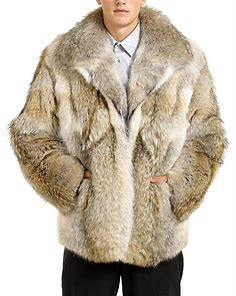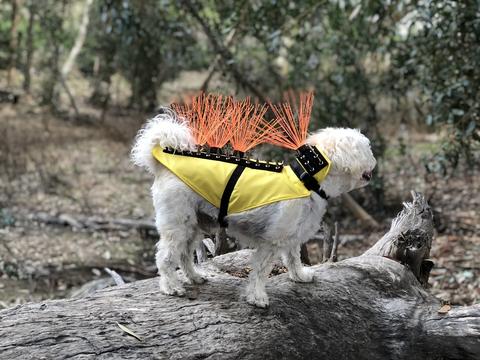Coyote News Facts will cover the basic science facts concerning Coyotes and share the latest news about them. Coyotes are members of the Canidae family (Canines) which includes wolves, dogs, foxes, and jackals. Also, they have narrow, elongated snouts, lean bodies, yellow eyes, bushy tails, and thick fur. They are also known for their howling. Coyotes are nocturnal hunters (hunt at night). They also often communicate their location to each other through howls. They are very smart creatures with an excellent sense of hearing, smell and sight.
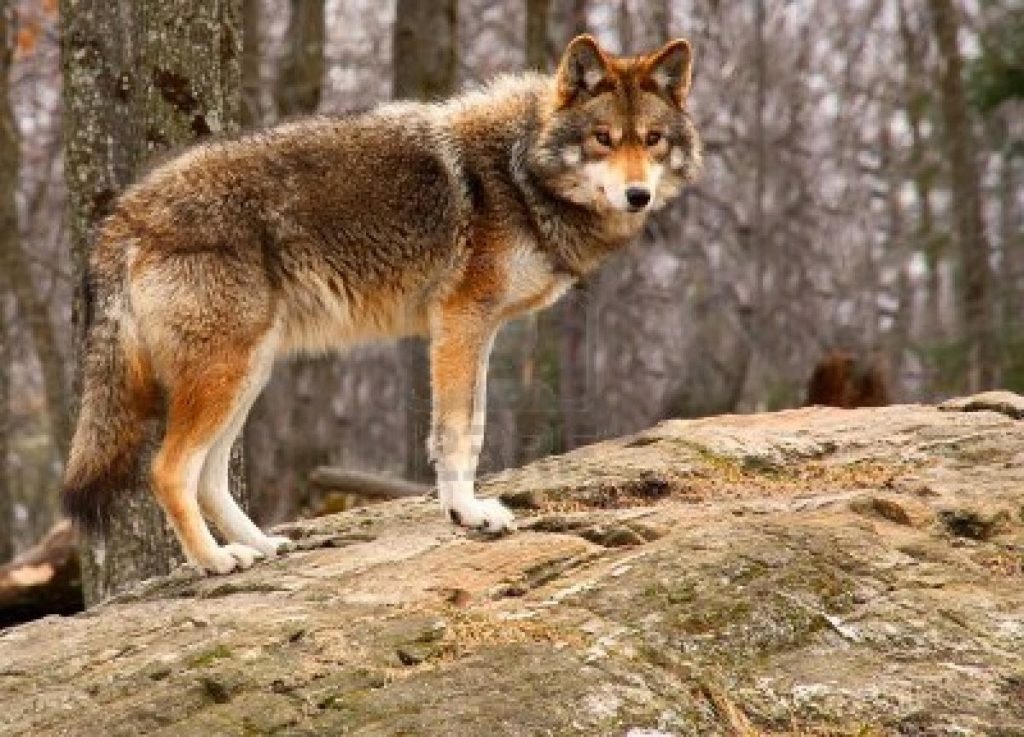
Coyote Vital Statistics
Coyotes (Canis latrans) are 32 to 37 inches (81 to 94 centimeters) from head to rear, not including the tail, according to Bradford. Their tail adds another 16 inches (41 cm) to their length. Coyotes typically weigh about 20 to 50 lbs. (9 to 23 kilograms). This would depend on their age, gender, and health status. The fur of Coyotes varies from grayish brown to a yellowish gray on the upper parts. The throat and belly are whitish. The forelegs, sides of the head, muzzle and feet are reddish-brown, depending on where they live. Coyote adaptations to their environment to determine their coat color. Those that live in the mountains have darker coats than those that live in the desert. They can run up to 40 mph and can travel up to 100 miles in search of food if food is scarce in their current location.
Coyote Habitat
Long story short, they can live anywhere within the continental United States except the far northern reaches of Alaska. Consequently, this kind of dog is native to North America and roam the plains, forests, mountains, swamps, and deserts of the United States, Canada, Mexico, and Central America. So, they are highly adaptable to just about any environment, including tropical climates, extremely cold climates and anywhere in between.
Coyote Reproduction
The mating season lasts from January through March. After mating the gestation of the pregnancy lasts about 2 months. The litter size can be anywhere from 1-19 pups, but the average litter is 6. The pups are fully weaned in about 35-45 days. So, after weaning the pups are fed by both parents via regurgitated food, like African Jackals feed their young. The male cubs leave the den after about 6-9 months, but the females remain longer. Coyotes are fully grown in about 9-12 months, depending on their nutritional intake and overall health. They are sexually mature and able to bread about 9-10 months after their birth. Coyotes live an average of 10 years in the wild and 18 years in captivity.
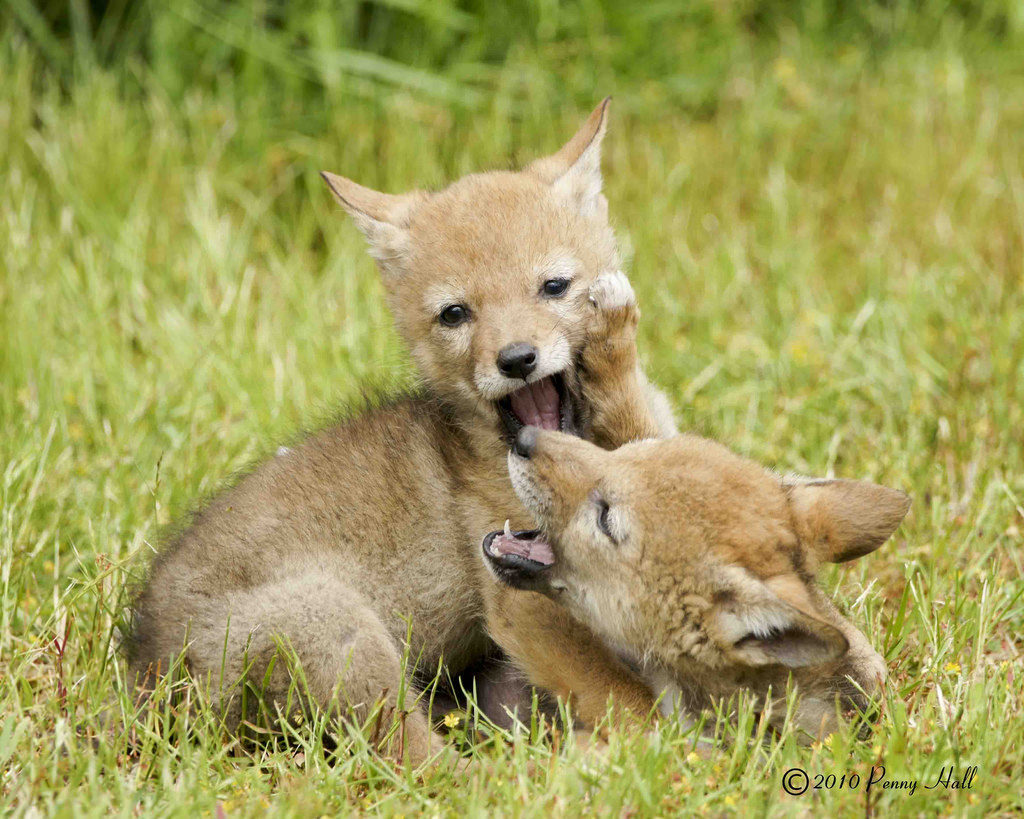
Coyote Behavior
Coyotes can be distinguished from domestic dogs because they have large erect ears and when they walk or run their tail droops lower than their body, according to Animal Diversity Web. Also, coyotes are less likely to form packs and when they do it is often a family group, like a mating pair and their adult offspring. They hunt near their den and are nocturnal hunters. Hence, these dens are either dug by the coyote or the coyote enlarges the abandoned den of another animal. As mentioned before, they can run up to 40 mph, but they can also jump up to 13 ft. So, if you see a coyote on your roof, you’ll know how it got there – it jumped!
Coyote Calls
The coyote is the most vocal of all North American wild mammals. They have 3 distinct calls first is a squeak. The second is a distress call, which consists of a quick series of yelps. Then finally, the howling call. Howling acts both to announce where territories are to other packs, as well as, between two members of the same pack to announce to each other their location.
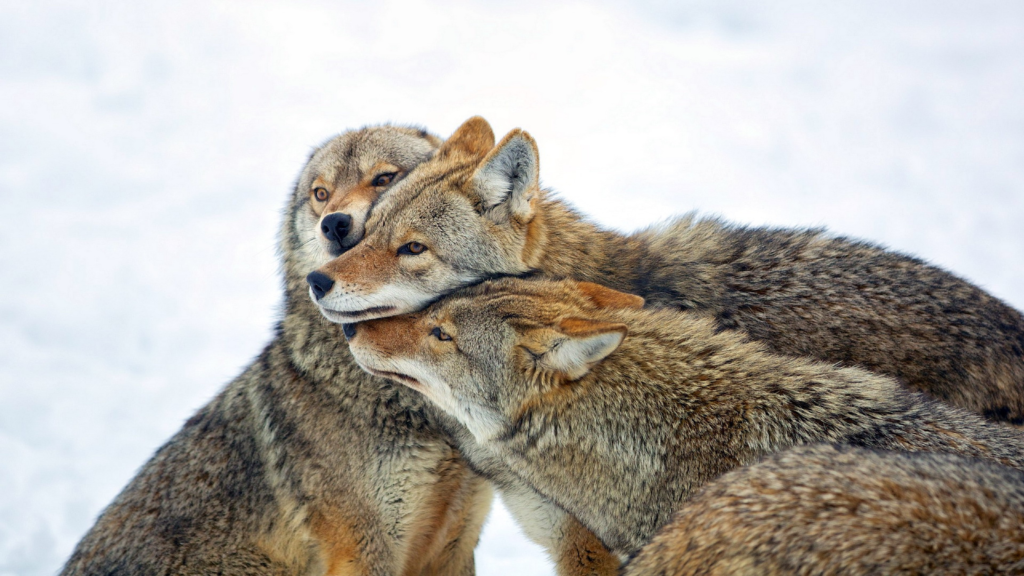
Coyote Diet
Coyotes primarily eat mice, squirrels, and rabbits. But they will eat any mammal they can catch. They prefer fresh meat, but they will also consume the carcass of a dead animal. They also occasionally eat birds, snakes, lizards, and large insects, among other things. Plants are also eaten by coyotes. They include leaves of white cedar, and balsam fir, strawberries, and apples. Fruits and vegetation are a significant part of the diet of coyotes in the fall and winter months. In packs, coyotes will also take down deer or livestock.

Animals that Prey on Coyotes
This is a shortlist. The only wild animals that are known to attack and kill coyotes are wolves and mountain lions. Bears are too slow to catch them because their top speed is only about 34 mph and they are much less maneuverable than coyotes. The only other thing that hunts coyotes is mankind. About 400,000 are killed per year by people. Which is actually a good thing, because if not, there would be a population of coyotes that would be unsustainable. There would not be enough food to go around. Coyotes are not endangered in the least, so hunting should be permitted to control the population.
Positive and Negative Economic Effects
Coyotes control rodent populations in both the wild and on farms and ranchlands. Coyote pelts are also collected and sold for use as coats, hats, and other garments. Also, fur blankets are made from the pelts. These items are expensive though, with a coat costing upwards of $2,000. The negative economic impact comes from coyotes praying on farmer’s livestock, including poultry. They also harbor certain diseases like rabies that can infect domestic pets. They also compete with hunters for deer, rabbits, and squirrels.
Coyotes in the News
Tempe, Arizona
On March 12, 2019, in Tempe, AZ a coyote was seen playing with a domestic dog. The owners saw them playing together and thought nothing of it. Their neighbors then told them that occasionally coyotes will lure dogs away from their owners to kill them. While this is true, according to the experts consulted, if the coyote did not have young to feed and didn’t feel threatened. The dog and coyote were just playing. Neither animal was hurt in any way.
Kirtland, Ohio
In February 2019 a Kirtland, OH woman learned about a protective vest for dogs to protect them from coyote attacks. She had heard coyotes howling near her property so she decided to buy one of these vests. Soon after she got it, she was watching her dog from her garage, when a coyote sprinted toward her dog. But the coyote stopped as soon as it reached the flexible whiskers on the vest. The Kevlar vest has metal spikes and long flexible whiskers positioned where coyotes and birds of prey are known to strike. The coyote just turned and ran.
Blowing Rock, North Carolina
At least 7 coyote carcasses were found between Blowing Rock and Linville, NC on March 25th, 2019. They were left in a popular illegal dumping area on highway 221, near Grandfather Mountain. It is unknown how they died and who dumped them there, but the matter is being investigated by the North Carolina Wildlife Resources Commission’s enforcement office. I’ll keep you informed of any new information is brought to light.
The top 10 counties for Coyote sitings in North Carolina include:
- Wake County – 76 reported sightings
- Mecklenburg County – 71 reported sightings
- Forsyth County – 47 reported sightings
- Gaston County – 39 reported sightings
- New Hanover County – 34 reported sightings
- Iredell County – 29 reported sightings
- Cumberland County – 23 reported sightings
- Guilford County – 20 reported sightings
- Union County – 20 reported sightings
- Buncombe County – 20 reported sightings
Crazy looking protective vests for dogs are available HERE. Protect your dog from Coyote Attacks!
Bibliography
Animal Diversity Web. “Canis Latrans (coyote).” Animal Diversity Web. Accessed March 16, 2019.
Azfamily.com News Staff. “Was Coyote Trying to Lure Dog Away from Owner in Tempe?” AZFamily. Last modified March 12, 2019.
Bjorkman, Katie. “Is the Number of Wild Coyotes in the United States Rising? If So, Why?” Quora – A Place to Share Knowledge and Better Understand the World. Accessed March 16, 2019.
Bradford, Alina. “Coyote Facts.” Live Science. Last modified September 25, 2017.
Stratford, Suzanne. “Body Armor Saves Dog from Coyote Attack: ‘She Was Headed for the Jaws of Death’.” Fox8.com. Last modified February 27, 2019.
Thomas Sherrill. (2019, March 25). Multiple dead coyotes found dumped along US 221.

